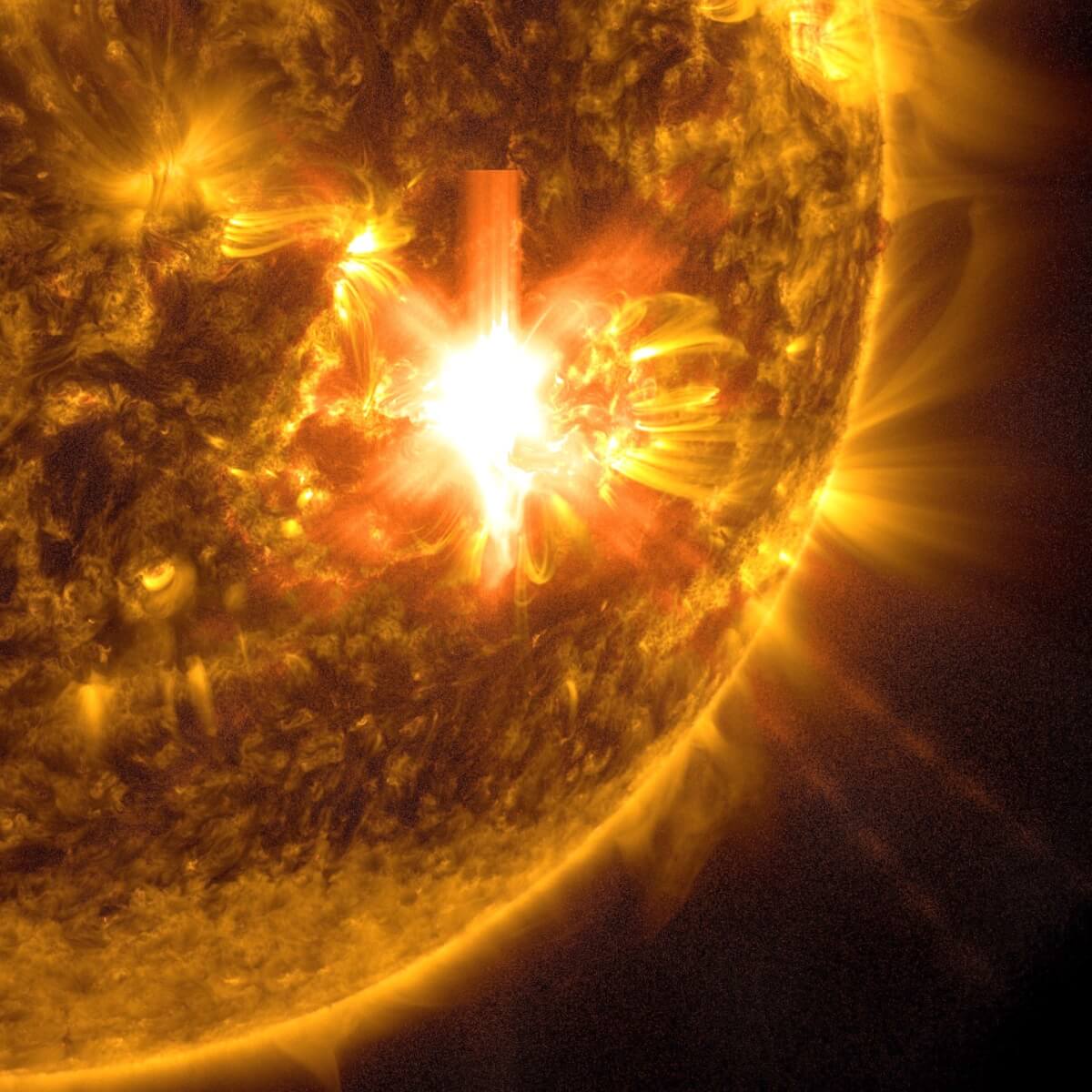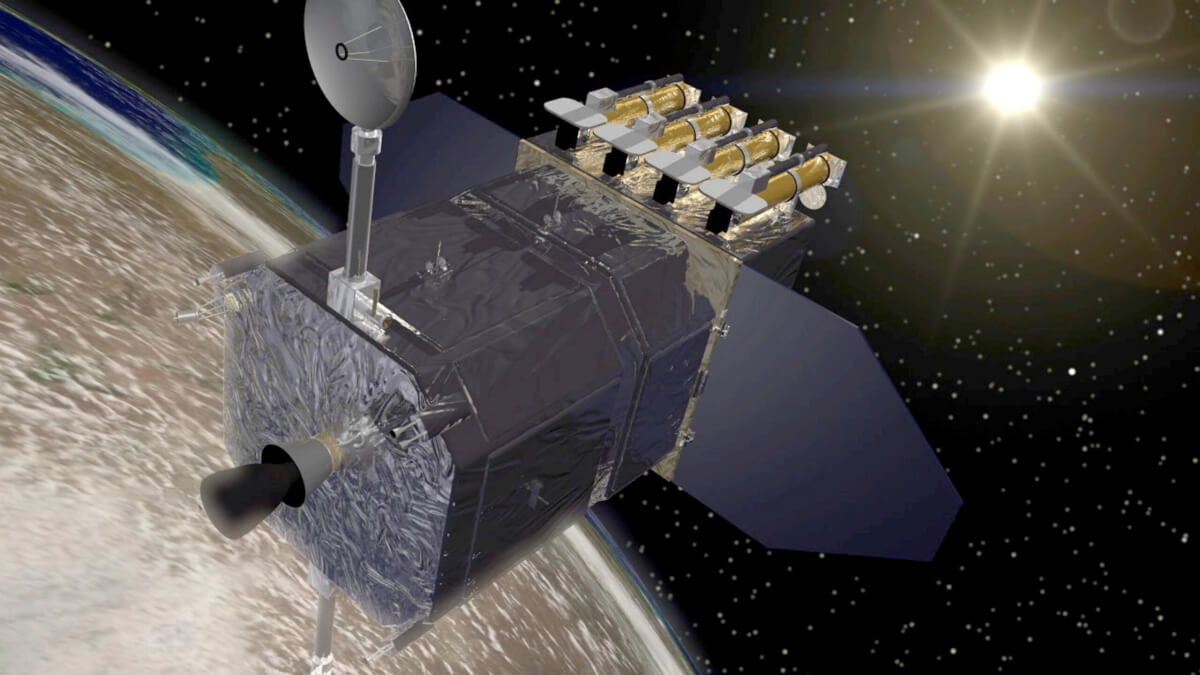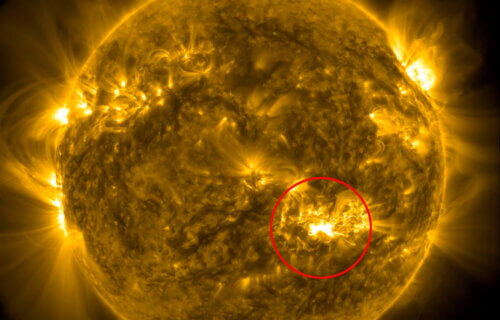Earth is under the watchful eyes of scientists as a colossal sunspot, approximately 15 times the size of our planet, poses a significant threat to cause widespread disruption. Known as sunspot AR3664, this immense feature spans an astonishing 124,000 miles. The impact of such geomagnetic storms is profound as they can disrupt satellite operations, communications, the electrical power grid, and even navigation systems. Already, there have been reports of radio blackouts across Africa, Europe, and Asia.
Sunspots are darker, cooler areas on the sun’s surface, arising from interactions with the sun’s magnetic field. These areas are often the origins of solar flares and coronal mass ejections (CMEs), which are sudden eruptions of magnetic fields and plasma from the sun’s corona.

NASA’s Solar Dynamics Observatory explains that the flare is categorized as an X3.9 flare.” X-class denotes the most intense flares, while the number provides more information about its strength,” the agency writes.
The potential for chaos stems from the sunspot’s ability to emit powerful X-class solar flares, the most intense form of solar flares known for their capacity to disturb Earth’s geomagnetic field. According to Spaceweather.com, these flares have been directing vast amounts of energy and radiation toward our planet. Solar physicist Dr. Keith Strong has been documenting the solar storm on X. A graphic from the NOAA/SWPC in Boulder show how shortwave radio interference impacted Africa, Europe, Asia, and even parts of Australia. The planet’s western hemisphere avoided this first hit.
The X flare is producing strong radio blackout (R3) conditions over most of Asia, E. Europe and E. Africa. pic.twitter.com/c3kQzpgVps
— Keith Strong (@drkstrong) May 10, 2024
The U.S. Space Weather Prediction Center (SWPC), a division of the National Oceanic and Atmospheric Administration (NOAA), is closely monitoring this activity. They have begun to track a series of solar eruptions since last Wednesday, marking an uptick in the sun’s activity. The SWPC has officially issued a Severe (G4) Geomagnetic Storm Watch for Friday evening, May 10. This warning extends through the weekend as additional solar eruptions are likely to continue affecting Earth.
“Space weather forecasters have issued a Severe (G4) Geomagnetic Storm Watch for the evening of Friday, May 10. Additional solar eruptions could cause geomagnetic storm conditions to persist through the weekend,” reported the SWPC. In a video posted on X, Dr. Strong showed video of an X-ray flare identified as the fourth largest in the current solar cycle.
X FLARE IN PROGRESS: Here we go again active region 3664 just produced an X4 flare that peaked at 06:50 UT. That would be the 4th largest X-ray flare so far during this solar cycle. Clearly there was ejecta off to its north which demonstrates that a CME was launched towards Earth pic.twitter.com/xLER0j21Bz
— Keith Strong (@drkstrong) May 10, 2024
Strong M5.97 flare from sunspot region 3664
Follow live on https://t.co/3Xxrvc3cpA pic.twitter.com/lYiUF0amC0— SpaceWeatherLive (@_SpaceWeather_) May 10, 2024
Since early Wednesday, this cluster of sunspots has generated several moderate to strong solar flares. “At least five flares were associated with CMEs that appear to be Earth-directed. SWPC forecasters will monitor NOAA and NASA’s space assets for the onset of a geomagnetic storm,” the center further stated.
Despite the disruptions, geomagnetic storms can also bring about one of nature’s most stunning visual phenomena—the aurora. These brilliant, colorful light shows might be visible to millions of Americans under the right conditions over the weekend. “A severe geomagnetic storm includes the potential for aurora to be seen as far south as Alabama and Northern California,” noted SWPC.

Why do geomagnetic storms create chaos for communication technology?
Geomagnetic storms are disturbances in Earth’s magnetic field caused by the interaction between the solar wind and our planet’s magnetosphere. The solar wind is a constant stream of charged particles, primarily electrons and protons, that are ejected from the sun’s upper atmosphere. When the sun experiences increased solar activity, such as solar flares or coronal mass ejections, the solar wind can intensify and carry a higher concentration of charged particles toward Earth. This is exactly what’s occuring in the image and video of the X4 flare shared by Dr. Strong.
When these charged particles reach Earth’s magnetosphere, they interact with the existing magnetic field, causing fluctuations and disturbances. During a geomagnetic storm, the magnetic field can become compressed on the dayside and stretched on the nightside, leading to a series of complex processes that affect Earth’s ionosphere.
The ionosphere is a layer of Earth’s upper atmosphere that is ionized by solar radiation. It plays a crucial role in radio communication, as it reflects and refracts radio waves, enabling long-distance transmission. During a geomagnetic storm, the increased influx of charged particles from the solar wind can cause rapid fluctuations in the ionosphere’s electron density, leading to the radio blackouts and communication disruptions happening throughout the eastern hemisphere.

Scientists say these disruptions occur because the changing electron density alters the propagation of radio waves through the ionosphere. High-frequency (HF) radio communications, which rely on the ionosphere for reflection, are particularly vulnerable to these disturbances. The radio waves may be absorbed, refracted in unexpected ways, or completely blocked, resulting in blackouts or reduced signal quality. Additionally, the increased electron density can cause signal scintillation, leading to rapid fading and distortion of radio signals.
Geomagnetic storms can also affect satellite communications and navigation systems, such as GPS. The fluctuations in the ionosphere can introduce errors in the timing and positioning calculations, reducing the accuracy and reliability of these systems. Even worse, the increased radiation and charged particles associated with geomagnetic storms can potentially damage satellites and their electronic components.
G4 conditions have been observed… pic.twitter.com/uWZC96N9F1
— NOAA Space Weather Prediction Center (@NWSSWPC) May 10, 2024
That said, solar storms are nothing new and there have been recent storms that thankfully left the planet unscathed. Earlier this year, scientists from the Center of Excellence in Space Sciences India at IISER Kolkata predicted that the peak of the current sunspot cycle (solar cycle 25) was imminent in the first half of 2024, with a possible extension to September.
